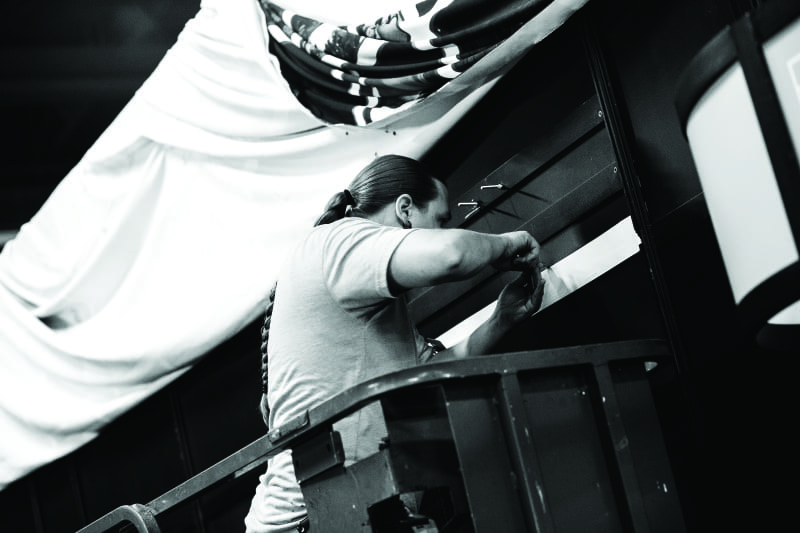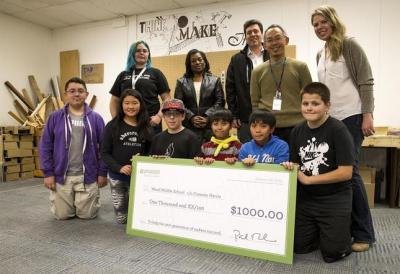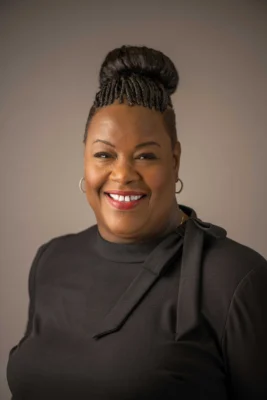The current and future workforce
Finding, hiring and developing quality labor is a goal for I&D companies across the board. They face many challenges, from labor skills that vary by regions to an aging workforce in an industry that is not attracting millennials. Yet these companies are committed to the people they hire. We will see how the industry invests in its people, and explore the factors contributing to the aging workforce as well as the challenges millennials face – plus look at the future workforce.
People are an investment
Labor is often considered a commodity in that it doesn’t matter who carries out the task. However those who work and manage in the tradeshow labor industry would strongly disagree.. With crews that differ by region and the dynamics created by labor unions, the companies have little control over who works for them, heightening the need for reliable people. When I&D companies find an individual who shows talent, professionalism, dependability and a capability of managing others, these companies recognize potential and are willing to invest in developing that person.

In the early 1990s, Don Minot, vice president of operations at Eagle Management, helped open several new branches for the company.
He said, “When you go into a city, you look for the person who is going to be a good lead-man and turn him into a manager. You just need to find him and elevate him.”
As a whole, there is a lack of formal education for the tradeshow industry. Few colleges teach the skills required to manage a tradeshow program or work on the show floor. Filling its own need, the industry then takes on the training and development of its own.
Industry training programs for labor crews
Jack McEntee, who started I&D with his friends, Tony Amodeo and Pat Alacqua, was a school teacher in the early 1980s who approached his business from an educational standpoint. He realized that the formula to success was to find good talent and commit to them with training, a definite amount of work, and to ensure that they were paid the money promised them.
Willwork Inc. offers training for its employees through Willwork University, which features a unique blend of classroom, shop floor and exhibit floor instruction. Willwork University instills in its students not only a high degree of technical training, but also a deep commitment to customer service. The role-playing of real-life situations on the trade show floor gives students the ability to think on their feet, anticipate and head off potential problems, and be creative in developing solutions.
Joe Toback, president of Local 510 in San Francisco, helped develop that union’s training program from the job orders. When he was given a job to process, he had to ask: “Who’s available to work? What skills are needed? What adjustments need to be made when those skills are needed? How can we anticipate the needs?” From these questions, he was able to project the skills his crews needed and identify the current gaps in his workforce. Based on this, Toback developed a training program, and Local 510 JATC holds free classes in intermediate modular systems, advanced graphics, show site graphics and communications – all focused on upgrading the skills of journeypersons. Through these courses, the union improves its workforce and increases the opportunities for the members who take advantage of them.
Aging workforce
An undeniable fact in the install and dismantle community is that the workforce is aging. According to Bob Reinecke, owner of ABC Expos, the average age of a union member in San Francisco is 56. And there are not as many young people entering the industry. Why is this?
One factor is that Baby Boomers are working longer. In 1989, the average retirement age was 63 (http://www.bls.gov/mlr/1992/07/art3full.pdf).
In 2014, the retirement age is 66 and steadily rising (http://money.usnews.com/money/retirement/articles/2014/05/12/the-ideal-retirement-age-and-why-you-wont-retire-then). Baby Boomers, who are children of survivors of The Great Depression, grew up with restrictive budgets but were granted lines of credit when they reached adulthood. Mortgages and credit cards allowed them to live charmed lives, enabling them to buy the homes of their dreams while taking their families on vacations to Disneyland.
Not saving the way their parents did, Baby Boomers don’t have retirement funds and are now working longer. Their health is better, which means that they can continue working, but they also need to save for later life.
Not only are Baby Boomers not passing their jobs to the next generation, but they also lack the money to leave to their children. The affliction of illennials is that they’re in the hole before their life has begun and will probably be slow to retire as well.
A decade without newcomers
The effects of 9/11 shook the country and nearly destroyed the tradeshow industry. When tradeshows were canceled across the U.S., crews were suddenly out of work, and some of their employers shut down before being able to pay laborers for completed jobs. During the next decade, work was extremely competitive among established I&D companies, and those who were in the industry fiercely held their ground.
Newcomers were not given the opportunity to learn the trade and work their way up. The unions delegated work to its senior members first, and younger workers didn’t have a chance to gain the experience to gain seniority. Young workers need 2,000 hours to achieve journeyman status, and if the workflow is slow, this can take 5-7 years. Now that workforce is older and there is no next generation to replace them, where will this new labor come from? Who is the future of I&D labor?
Rising skill levels demanded across all industries
Across all industries, today’s employers demand more skills than they did in the past, even for jobs not requiring a formal education. According to a study found on the United States Department of Labor website, among jobs that did not require a college education, 70 percent required that workers deal with customers, 61 percent required that workers read or write paragraphs, 65 percent required arithmetic and 51 percent required the use of computers.
I&D workers need to continually learn new skills, exhibit systems and the latest technologies. The study lists several factors that have contributed to the rising demand for skills in the labor market: technological and organizational changes, trade, deregulation of key industries and the decline of unions. (http://www.dol.gov/oasam/programs/history/herman/reports/futurework/conference/trends/trendsVII.htm) The demand for higher skill levels, in addition to other factors, has driven millennials to pursue college degrees in staggering numbers.
Millennials gravitate towards college education and office jobs
Since 1973, the average hourly earnings for workers with a high school degree have declined. At the same time, a study of representative samples of workers by Howell and Wolff (1991) showed that between 1960 and 1985, the changing occupational and industrial structure of the economy led to a rising demand for cognitive and interpersonal skills and a decline in the demand for motor skills. More data on workers and their jobs provide direct evidence that workers use more skills than they did in the past.
With these statistics in hand, the battle cry by high school counselors was that students needed to attend to college to have a lucrative career and that college was an “investment” in a teenager’s future. Teenagers and their hopeful parents answered the cry, and in 2010, the Labor Department reported that 70.1 percent of new high school graduates enrolled in colleges and universities, a historical high for the data series since it began in 1959.
Now possessing both cognitive abilities and college degrees, millennial college grads choose white collar jobs where they can use their hard-earned and expensive skills. Even though tradeshow work can offer a salary equivalent to many white collar jobs, millennials lack the motor skills learned from working with their hands, and most of what they learned in the college classroom is probably not useful on the tradeshow floor.
Millennials who choose the workforce rather than college
Although high GPAs and degrees sound impressive, they do not equal success, and many successful people are able to have fulfilling and successful careers without a traditional education There are many young people who choose to create their own destiny by entering directly into the workforce for a variety of reasons.
While millennials are enrolling in colleges in droves, the value of college degrees is declining. In 2014, George Leef wrote in Forbes, “The percentage of college graduates who work in jobs that don’t require any advanced academic preparation (the ‘mal-employed’) has been rising for years, and now stands at 36 percent. If college degrees are becoming more valuable, why are so many graduates either unemployed or employed at low-paying jobs?” (http://www.forbes.com/sites/georgeleef/2014/04/21/college-degrees-arent-becoming-more-valuable-their-glut-confines-people-without-them-to-a-shrinking-low-pay-sector-of-the-market/)
In contrast to the expensive college degrees, working in the tradeshow industry offers career-focused, on-the-job experience. The aforementioned companies and unions offer free (or comparatively inexpensive) training where workers learn the skills they need to know and work with the people who are their co-workers, mentors, and bosses. Not only are they accelerating their careers, they’re earning money doing it. A young worker who simultaneously earns money, job experience and career advancements is markedly different than the college student, whose career stalls for 4-6 years, then graduates unemployed, carrying a huge debt and answering job interview questions about experience rather than completed courses.
Finally, a millennial may opt out of college because the traditional education setting does not cater to kinesthetic learners who can’t sit still in a desk. These people may excel outside of the formal classroom or office environment and need jobs where they can work with their bodies, whether that’s construction, building or on the trade show floor. These skills are mostly learned on the job or within the industry, and few universities or colleges offer courses in these skills.
Widening gap between the college-educated and those who are not
Although there are many reasons a person who doesn’t attend a traditional college can be successful, studies show that, despite rising levels of formal education, public schooling has failed to teach many adults basic math and reading skills, work habits, and interpersonal skills.
The failure of U.S. public schools is especially noticeable on the international level. Out of 34 countries, the U.S. ranked 26th in math and 21st in science in the 2012 results of the Program for International Student Assessment, issued by the Organization for Economic Cooperation and Development.
Developing children who can think critically
Since the embarrassing results of the U.S. rankings in math and science skills, U.S. President Barack Obama called for a new focus on science, technology, engineering and math (STEM) in public schools (http://www.newyorker.com/business/currency/can-toys-create-future-engineers). These programs teach children critical thinking and problem-solving skills, the exact skills required for a successful tradeshow worker.
Wood Middle School in Alameda, Calif., is an elementary school where more than 400 students have the opportunity to learn math, science, technology, art and engineering in a hands-on “Maker Space.” The classroom has collection of hand tools, scrap wood, old computers and a small 3D printer where both boys and girls learn math from measuring an object they build, science from a rocket they create and tech skills from a robot they tinker. The kids even learn how to use AutoCAD, a 2D and 3D design and drafting program engineers and builders use.
Group Delphi, an exhibit house with a location in Alameda, Calif., recognized the opportunity to help children in the local community learn to think critically, live creatively and experience the joy and satisfaction that comes from making something with their own two hands. When they learned that the Maker Space relies completely on donated materials, Group Delphi donated more than $500 in wood, acrylic, paints and other materials from their shop. In addition, the company also gave a $1,000 check to the school to make their Maker Space a modern-day woodshop.
Nga Nguyen, the head teacher of the Maker Space at Wood Middle School, recognizes that not all kids want to become doctors or lawyers and that exhibit building companies like Group Delphi show them the opportunities for practical careers. With classrooms like all across the country, the future workforce looks promising.

Group Delphi CEO Justin Hersh presented a check for $1,000 to Wood Middle School to develop a new generation of makers and re-ignite a passion for building physical things. Group Delphi has also donated more than $500 to date in raw materials to the school for students to use in their own maker space a modern-day woodshop. “
We are delighted to partner with Group Delphi, with their gracious support, our students can be innovative, creative and prepared to design solutions for the 21st century. Group Delphi is making a difference in the lives of children,” Wood Middle School Principal Cammie Harris said.






























